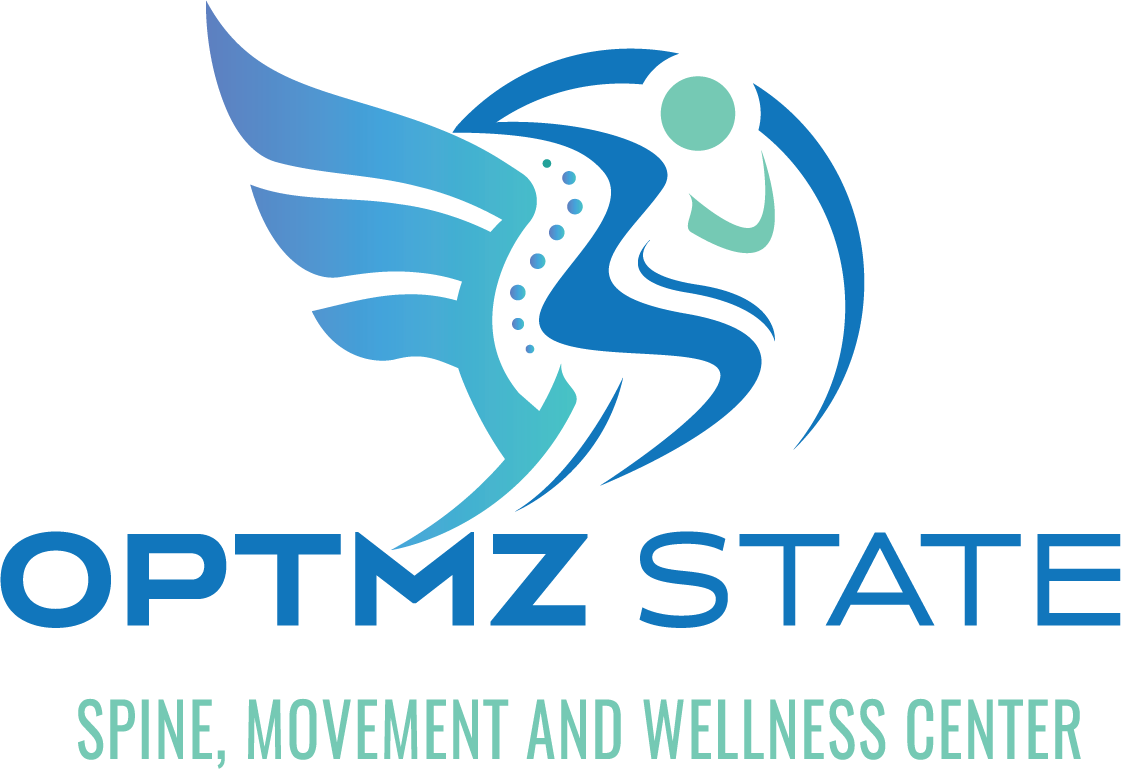When you're dealing with headaches, finding effective relief can feel overwhelming. Fortunately, there are natural strategies you can try that might make a significant difference. From staying hydrated to practicing relaxation techniques, these tips can help you manage discomfort without relying on medications. You'll want to know which simple adjustments could lead to lasting relief, especially when you consider how easy some of them are to implement. Before you dismiss the possibility of a more natural approach, let's explore how these methods can fit into your routine.
Stay Hydrated
Staying hydrated is essential for preventing headaches. When you don't drink enough water, your body can become dehydrated, leading to discomfort and pain. You mightn't realize it, but even mild dehydration can trigger headaches. To keep your body functioning well, aim to drink plenty of fluids throughout the day. A good rule of thumb is to target at least eight 8-ounce glasses of water daily, but your needs may vary based on your activity level and the climate you're in.
Listen to your body. If you start to feel parched, that's a clear sign you need to sip some water. You can also look for other signs of dehydration, like dark urine or fatigue. If you notice these, increase your fluid intake. When you're active or spending time in the heat, you'll need even more water, so keep a bottle handy.
You can mix it up, too. Water isn't your only option; herbal teas and infused water with fruits or herbs can help you stay hydrated while adding flavor. Just be cautious with beverages that contain caffeine or alcohol, as they can dehydrate you further.
Incorporating hydrating foods into your diet can also boost your fluid intake. Fruits and vegetables like cucumbers, oranges, and watermelon can provide both hydration and essential nutrients.
Practice Relaxation Techniques
To ease your headache, practicing relaxation techniques can be a game-changer.
Try incorporating deep breathing exercises or guided meditation sessions into your routine. These methods can help calm your mind and reduce tension, making it easier to find relief.
Deep Breathing Exercises
Deep breathing exercises can be a powerful tool in your arsenal for headache relief. When you're feeling the tension build, taking a moment to focus on your breath can help ease the pain.
Start by finding a comfortable position, whether sitting or lying down. Close your eyes and take a deep breath in through your nose, allowing your abdomen to expand fully. Hold that breath for a count of four.
Next, exhale slowly through your mouth, letting go of any tension. As you breathe out, visualize the stress leaving your body. Repeat this process for several minutes, aiming for a rhythm that feels natural to you.
You might also try counting your breaths to maintain focus. Inhale for a count of four, hold for four, and exhale for another four. This pattern promotes relaxation and helps clear your mind.
Incorporating deep breathing into your daily routine can also prevent headaches from developing in the first place. Set aside a few minutes each day to practice, and you'll likely notice a significant reduction in stress and tension, which can ultimately lead to fewer headaches.
Guided Meditation Sessions
After practicing deep breathing exercises, you might find that guided meditation can further enhance your relaxation and headache relief.
This technique allows you to focus your mind, reduce stress, and alleviate tension, which are all contributors to headaches.
You can easily find guided meditation sessions online or through apps. Choose one that resonates with you, whether it's a soothing voice, calming music, or specific visualizations.
Set aside a few minutes in a quiet space where you won't be disturbed. Close your eyes, and follow the guide's instructions.
As you explore the meditation, focus on your breath and let go of any intrusive thoughts. Picture a serene landscape or visualize tension melting away from your head and neck.
Allow the peacefulness to wash over you.
Regularly incorporating guided meditation into your routine can lead to long-term benefits, helping you manage stress and prevent headaches from returning.
Utilize Essential Oils
Essential oils can be a powerful ally in your quest for headache relief.
You'll want to explore the best essential oils for this purpose, learn effective application techniques, and keep safety precautions in mind.
Let's uncover how these natural remedies can enhance your well-being.
Best Essential Oils
Exploring natural remedies, many people turn to essential oils for headache relief. These concentrated plant extracts can provide soothing effects and may help ease your discomfort.
Some of the best essential oils you might consider include peppermint, lavender, eucalyptus, and rosemary.
Peppermint oil is often favored for its invigorating aroma and cooling sensation. It can help to relax tense muscles and improve blood flow, making it an excellent choice for tension headaches.
Lavender oil, known for its calming properties, can also reduce stress and promote relaxation, which is beneficial for headaches related to anxiety.
Eucalyptus oil works wonders for sinus headaches, as its decongestant properties help clear nasal passages. Inhaling the aroma can provide immediate relief.
Rosemary oil, on the other hand, has anti-inflammatory properties and may help with both tension and migraine headaches.
When selecting essential oils, make sure to choose high-quality, therapeutic-grade options for the best results.
Application Techniques
Often, people find that using essential oils effectively can enhance their headache relief. To get the most out of these oils, it's crucial to apply them correctly. Here are some techniques you can use:
- Inhalation: Add a few drops of your chosen essential oil to a diffuser or inhale directly from the bottle for immediate relief.
- Topical application: Dilute essential oils with a carrier oil, then apply to your temples, neck, or wrists. This helps with absorption and minimizes skin irritation.
- Warm compress: Mix a few drops of essential oil with warm water, soak a cloth, and place it on your forehead or neck for soothing relief.
- Massage: Combine essential oils with a carrier oil and gently massage your temples or the back of your neck, promoting relaxation and reducing tension.
Using these techniques, you can personalize your approach to headache relief.
Experiment with different methods and oils to discover what works best for you.
Safety Precautions
Using essential oils for headache relief can be highly effective, but it's important to prioritize safety to avoid adverse reactions.
First, always dilute essential oils with a carrier oil, like coconut or jojoba oil, before applying them to your skin. This helps prevent skin irritation and sensitization. A good rule of thumb is to use a 2-3% dilution, which means mixing about 12 drops of essential oil per ounce of carrier oil.
Next, perform a patch test before widespread use. Apply a small amount of the diluted oil to a discreet area and wait 24 hours to check for any adverse reaction. If you experience redness, itching, or irritation, discontinue use immediately.
Be cautious when using essential oils around children, pregnant or nursing women, and individuals with specific health conditions. Some oils, like rosemary or sage, may not be suitable for everyone. Always consult a healthcare professional if you're unsure.
Lastly, maintain proper ventilation when diffusing essential oils in your home. Some oils can be overpowering, so start with a few drops and adjust as needed.
Prioritizing these safety precautions will help you enjoy the benefits of essential oils while minimizing risks.
Apply Cold or Warm Compress
When you're dealing with a headache, applying a cold or warm compress can provide quick relief. These simple methods can help ease your discomfort, but knowing when to use each type can make all the difference.
Here are some tips for using compresses effectively:
- Cold Compress: Use this for headaches caused by inflammation or tension. It numbs the pain and reduces swelling.
- Warm Compress: Opt for warmth if your headache is related to muscle tightness or stress. The heat helps relax tense muscles.
- Duration: Apply a compress for about 15-20 minutes. If you're using a cold compress, take breaks to prevent skin damage.
- Methods: You can use a gel pack, a bag of frozen veggies, or a warm towel. Just make certain it's not too hot or too cold to avoid any burns or frostbite.
To apply the compress, find a comfortable position and place the compress on your forehead or the back of your neck. Take deep breaths and try to relax.
For cold compresses, consider wrapping it in a thin cloth to protect your skin. If you go with a warm compress, confirm it's not scalding hot; a comfortably warm towel is often best.
Experiment with both types of compresses to see which one works better for you. Sometimes, switching between cold and warm can provide the most relief.
This simple technique can be your go-to for quick and effective headache relief.
Maintain Good Posture
Maintaining good posture can considerably reduce headache frequency and intensity. Poor posture, especially when sitting for long periods, puts unnecessary strain on your neck and back, leading to tension headaches. By consciously aligning your body, you can alleviate this pressure and promote overall well-being.
To improve your posture, start by evaluating your workspace. Confirm your chair supports your lower back, and your feet rest flat on the floor. Position your computer screen at eye level to avoid tilting your head forward or backward. If you're using a laptop, consider a stand or an external keyboard to maintain a comfortable angle.
When standing, distribute your weight evenly across both feet. Keep your shoulders relaxed and your head aligned with your spine. Avoid slouching or leaning to one side, as these habits can create muscle imbalances that contribute to headaches.
In addition to your workspace, pay attention to your posture during daily activities. Whether you're walking, cooking, or even talking on the phone, endeavor to maintain an upright position. Engage your core muscles to support your spine and reduce fatigue.
Take regular breaks to stretch and reset your posture, especially if you're working at a desk. Simple neck rolls, shoulder shrugs, and back stretches can help relieve tension.
Try Herbal Remedies
After improving your posture, you might want to explore herbal remedies as a natural approach to relief. Many people find that certain herbs can help alleviate headache symptoms effectively.
These remedies may provide a gentle alternative to over-the-counter medications, allowing your body to heal naturally.
Here are some popular herbal options you can consider:
- Peppermint: Known for its soothing properties, peppermint oil can be applied to your temples or inhaled to help ease tension headaches.
- Ginger: This powerful root can reduce inflammation and nausea, making it beneficial for migraines. Try ginger tea or supplements for potential relief.
- Feverfew: Traditionally used to prevent migraines, feverfew may decrease the frequency and intensity of headaches. You can find it in capsule form or as a tea.
- Lavender: The calming scent of lavender can help reduce headache pain and promote relaxation. You might try using lavender essential oil in a diffuser or as an inhalant.
When trying herbal remedies, it's important to pay attention to how your body responds. Not all remedies work for everyone, so you may need to experiment to find what's most effective for you.
Always consult with a healthcare professional before starting any new treatment, especially if you're pregnant, nursing, or taking medication.
Incorporating these natural options into your routine could lead to a happier, healthier you and help keep headaches at bay.
Get Adequate Sleep
Adequate sleep plays an essential role in preventing headaches and promoting overall wellness. When you skimp on sleep, your body can become stressed and more prone to pain, including headaches. Aim for seven to nine hours of quality sleep each night to keep your mind and body functioning at their best.
Creating a consistent sleep schedule can help regulate your body's internal clock. Go to bed and wake up at the same time every day, even on weekends, to establish a routine. This consistency signals your body that it's time to rest and rejuvenate.
Your sleep environment matters too. Make sure your bedroom is dark, quiet, and cool. Consider using blackout curtains or a white noise machine if necessary.
Also, limit screen time before bed. The blue light emitted by phones and computers can interfere with your ability to fall asleep. Aim to power down at least an hour before bedtime.
Relaxation techniques, like deep breathing or gentle stretching, can also ease tension and prepare you for sleep. Practicing these methods can help you unwind and signal to your body that it's time to rest.
If you find yourself struggling to fall asleep or stay asleep, don't hesitate to consult a healthcare professional. They can help identify any underlying issues and recommend strategies to improve your sleep quality.
Prioritizing adequate sleep is a simple yet powerful step toward reducing headaches naturally and enhancing your overall health.
Conclusion
By following these seven tips for natural headache relief, you can take control of your discomfort and improve your well-being. Staying hydrated, practicing relaxation techniques, and using essential oils can make a significant difference. Don't forget the importance of good posture, adequate sleep, and herbal remedies. By being mindful of your triggers, you'll be better equipped to manage headaches effectively. So, implement these strategies today and enjoy a more pain-free life!



